Is your cat constantly scratching itself? Could it be a possible case of fleas? Perhaps, you are right. But there’s something more to that too. Even though it’s rare, your cat may have lice.
Lice are usually found on stray cats who live under dirty conditions with other cats. Cats who also happen to share the same toys, bed, cat trees or other grooming tools are prone to having lice.
Related Post: Best Cat Beds
However, there is good news to your cat having lice – lice are a mild health issue which is easily identifiable. With the use of topical insecticide shampoos, you can help your cat get rid of lice. And the lice will not spread into your household.
Do take note that there’s one particular type of biting louse that spreads through cats – Felicola subrostratus – which doesn’t pose a threat to dogs or humans.
And now the bad news is that lice are extremely difficult to find, particularly in long-haired cats. Itchy skin problems are usually a sign of fleas, life, allergies, mites, etc. and therefore most of us don’t even think of lice in the first place. Worst case scenario, insects may also transmit tapeworms and spread on their grooming tools, beds and brushes for which it’s essential to take immediate action.
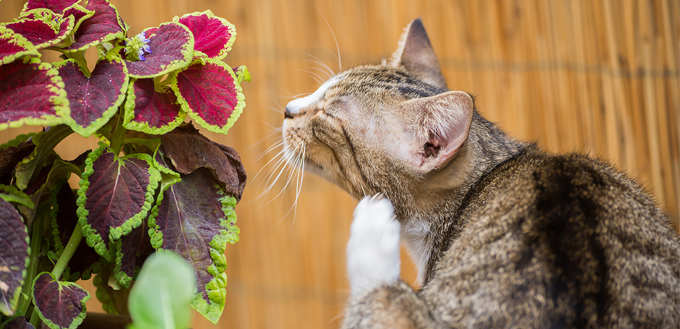
So, How do Cats Get Lice?
Lice don’t fly or jump into your cat’s skin. Surprisingly, they spend their entire life on your cat’s skin and will die just as they fall off. So, if your cat has lice, it means that they got it through direct physical contact with another cat. The most common way cats get lice is from their mother. Or otherwise, if you have more than one or two cats and they all sleep in the bed, chances are that the lice have spread in that way.
Symptoms of Lice in Felines
You will quickly find it out if your cat has lice. How? Gently part their fur and look for eggs, nits and any unknown stuff on their skin. If it’s lice, there is a high chance that you will see lice moving through your cat’s fur. Else ways, here are some other symptoms that are also probable:
- Too much scratching and biting
- Hair loss, tangles and matting
- White and brown spots on the skin and fur of your cat
- In severe cases, lice could cause insomnia, anxiety and tapeworms in cats
How does Lice Spread from the Groomer?
Just like we mentioned before that lice can transmit from brushes, bed, combs, scissors, cat trees and any other cat grooming tool that has not been washed properly, it spreads mainly in this way. And if you are the parent of a Persian cat or a Ragdoll, there’s a high chance that the cat would require more frequent brushing grooming and that’s how they are likely to be exposed to lice.
Can Cats Get Lice from Their Humans Companions?
Here’s a good news: neither you nor your cat can get lice from each other. The lice that live on your cat will not be able to live on humans – or spread between the members of your family. In a broad sense, there are two different types of lice – one that makes a human body its host or one that doesn’t. In other words, lice that infest on cats will only survive on other cats, and the ones that plague on humans will survive on theirs.
So, if you find lice on your child’s head, don’t go on blaming the kitty in your house.
How to Identify Cat Lice?
Remember we mentioned about Felicola subrostratus in the beginning, well, that’s the only type of lice that your cat can possibly get. And to make matters worse, it is kind of deadly. That’s because this chewing type of lice eats away the dead flakes of the skin due to which the body fluids that come out through small wounds chew into the skin. Hence, this is what cause terrible itching and skin irritation in cats. In contrast, the lice that infect humans and dogs are both the type that sucks blood.
Causes of Lice
Again, there’s no way lice can transfer from a person to a cat. However, there are situations whereby, lice can transmit from one cat to another.
- Living in unhygienic conditions
- Unable to groom
- Contact with other cats who are suffering from lice
- The use of belongings of another cat who is suffering from lice
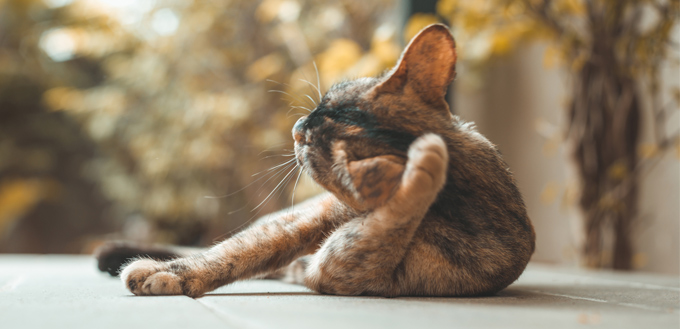
How to Check for Lice in Cats?
If your cat is continually itching himself, chances are it could be lice. In that case, check. But you need to look for them thoroughly. Lice are extremely difficult to find. You may even make use of a magnifying glass to see for them. Lice look more like dirt than small wingless insects. So, be sure to look closely.
On top of that, before you begin, make sure to protect your hands. Wear a pair of gloves and then separate your kitty’s fur down to their skin. Work on a section by section process. Look for spots that are whitish dirt on your cat’s fur. More specifically, look around the base of their hair follicle. That dirt looking stuff could actually be lice, lice eggs known as nits.
Lice eggs are off-white in color and are about the size of a poppy seed (1mm). The eggs are usually stuck to the base of their hairs at skin-level. Plus, if your cat has flaky skin, the nits may even blend in and look like dandruff.
Adult lice are sized like a sesame seed. They are tan, beige or yellow in color with some brown stripes on their abdomen and has six legs. And their head is triangular shaped. You can view a louse closely through a microscope. Once you catch any lice, make sure to squish them with your finger or drown them into a bowl of soapy water.
Where to Look for Lice?
Lice are tiny annoying creatures and are likely to stay close on the surface of your cat’s skin. There’s no guarantee as to where you can’t find them, but some familiar places include neck, tail and head. These places are where your cat doesn’t lick himself or herself, and it’s easier for lice to take over.
Cat lice are more visible to the naked eye, but you could easily miss seeing them. The species are just about 1 – 1.5 millimetres long. You are more likely to find lice eggs than lice itself. The eggs are typically located in clusters at the base of the hair follicles just next to your cat’s skin. Cats are more likely to scratch themselves in places where the eggs are.
Is it Fleas, Mites or Lice?
Fleas and mites have a similar symptom to that of lice; however, lice are still less itchy and uncomfortable compared to the others. There are more natural ways to tell the differences, but oh well, vets know better. If you want to be sure about what it actually is, get your cat diagnosed by your holistic vet before you proceed with any treatment for lice.
Related Post: Best Flea Treatments For Cats
Lice and fleas usually live on the surface of a cat’s skin. Whereas, mite’s dugout into the skin and cause severe irritation. Cats suffering from mites will also develop other skin infection. To break that down, they might suffer from fur loss on parts of their body like their face and ears from extreme scratching.
Fleas are obviously much easier to find. Fleas are tiny black bugs that jump or crawl away when you are trying to look for them in their skin. Also, fleas are at least three times bigger than lice as they are blood-sucking creatures, unlike lice that chew dead skin.
Related Post: Best Flea Collar for Cats
Whichever of these three pests you suspect that your cat has come in contact with, you must consult your vet as soon as you doubt it. Lice, fleas and mites are easy to treat, especially when it’s just the first few stages. There are specialized insecticide shampoos that help with the process. The sooner you act upon lice, your cat is likely to suffer lesser. Moreover, it reduces any long-term problems like loss of fur or open and infected wounds due to scratching.
Related Post: Best Flea Shampoo for Cats
What are the Complications of Lice Infestation?
Lice don’t cause any other health problems, but some complications are sure to follow:
- Secondary Skin Infections
Your cat will surely scratch himself to the extent that he or she would get cuts and sores. These open wounds are dangerous, and that’s what throws them to the risk of being infected by germs and bacteria.
- Changes in Skin
If the lice infestation has been there for quite long, the cat’s skin will become dark and thick, particularly along the midsection.
- Spread of Disease
The chances of body lice causing other uncommon bacterial disease is very less. As per the Centers for Disease Control and Prevention, all that body lice have caused are epidemics of typhus and louse-borne relapsing fever. This is more common when the cat diagnosed with lice infection has not been treated and continued to be left on unhygienic conditions.
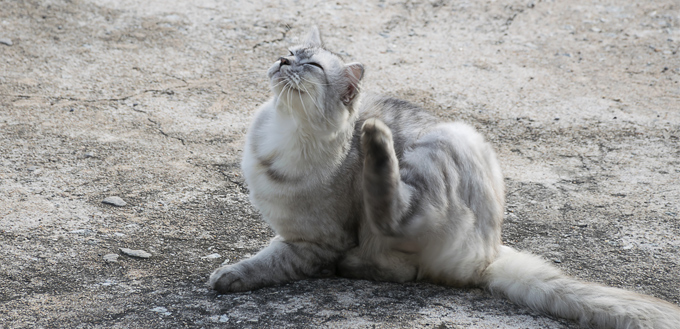
Possible Treatments
- Use Spot-on Products that has Fipronil
You can find fipronil-based products at pharmacies so you can grab it over the counter. Products that have fipronil includes Effipro and Frontline. Fipronil interferes with an insect neurotransmitter that is not at hands in mammals, which causes the death of lice. Apply the fipronil-based product every 30 days to the cats who may have come into contact with lice.
- Choose Products that have Selamectin
As an active ingredient as selamectin, it works the same way as fipronil-based products to kill life. However, for the use of this product, you need to consult your vet whether you should use this medication for your cat or not.
Do take note that fipronil and selamectin based products are not yet licensed to treat lice infections on cats. These products are just regarded as effective at killing lice.
- Remove the Lice-based Tangles Before Combing Your Cat
Combing to treat lice only works if you can get it right from their skin. But if your cat has badly tangled its fur, you will need to work a little extra to untangle those knots, and them comb to remove lice. If it seems impossible to untangle the knots and that your cat might be in pain, you could even snip the knots with scissors. Also, take care to keep scissor’s blades away from their skin as their sensitive skin might get nicks and cuts quickly.
- Use a fine-toothed nit comb
If you are considering combing, use a comb that has fine-tooth and takes out the lice from their fur easily. You will need extraordinary patience and dedication to comb out the lice from your cat’s hair. This method is pretty time-consuming and usually takes hours to nicely comb through a cat’s fur. Needless to say, that your cat will lose patience in a little while and start moving around.
Related Post: Best Flea Comb for Cats
- Use shampoo to Counteract Lice
Although this could sound easy, we always recommend not to shampoo cats to get rid of lice infections because of the drawback that comes with it. The biggest drawback of shampooing is that when your cat’s coat is dry, no active ingredient has been working to defeat the lice problem. So, this means that nothing is acting on the skin to kill lice or even an active ingredient that would prevent future lice from hopping on. Your cat has been cuddling on the dirty bed, and there’s nothing that would stop them from being infected with lice.
The shampoo method is by far the easiest method to treat lice and are also useful. Seleen is commonly used against lice infection. This thick green shampoo contains selenium sulphide that decreases the flakiness of the skin in your cat and thus reduces the food for lice. But Seleen is also not licensed to be used in cats, so you gotta do that at your own risk.
- Make Sure that Your Cat Goes Back to a Clean Environment
Once you have done everything possible to treat lice in your cat, now it’s time for you to wash their bedding, brush, cat tree and any other belonging to make sure that all of their stuff is lice-free too. In addition, spray your furnishings, sofas and beds with an insecticidal spray that will possibly kill the flea eggs and larvae.
Make sure that your room is well-ventilated when you spray such insecticidal sprinklers and remove any pet fish or bird from the room to help them get rid of the toxicity. Leave the room alone for at least two hours after you have sprayed insecticidal and do not allow your cat or other pets to breathe in that air.
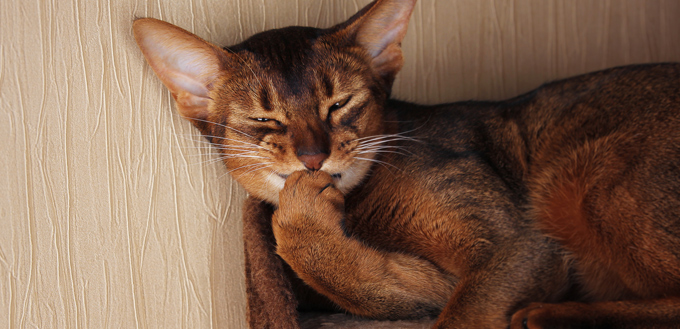
Other Treatments:
For some of you, it could prove to be really difficult to follow through with the procedures mentioned above, because let’s face it, cats are fussy. But don’t lose hope just yet, there are other treatments, too. Lice become easier to treat when your vet diagnoses it. Your vet will suggest several, and if you follow them, it could make both your life and your feline’s life so much easier.
So, here are some easier, but time-consuming methods that we could suggest you get rid of lice from your pet cat:
- Isolate Your Cat
This is only necessary if you have two or more cats in your household. This is done to prevent other cats from transmitting the same lice infection. The best you could do is keep the infected cat separately in a cage. This will also help to reduce the effort that you need to do to remove the lice.
- Shaving off Your Cat’s Fur
If your cat’s fur gets badly matted, your vet will recommend shaving it off. This will eliminate the pain that your cat needs to go through during the lice removal process.
How Can You Possibly Prevent Lice from Spreading?
Of course, the best way to keep your cat lice-free is to keep him in hygienic conditions with healthy and well-nourished food. But if you have more than one cat and many of them have lice, we are sorry to say that it’s going to be really difficult for you to prevent the other cats from getting lice, too.
There are anti-lice collars that you could make use of to reduce the chances of your cat having lice or from transmitting it to other cats or in your household. So far, there are still no vaccines or repellents that have been invented to prevent the transmission of lice from one cat to another.
Luckily, you do not need to serve your entire house with insecticides if your cat has gotten lice. That’s because lice are totally protruded on cats. The nits that fall off their skin will not survive at all.
Here’s the good in all the bad: you can still prevent the transmission of lice from one cat to another by keeping the lice affected cat away from the others. Wash the cat’s bedding, brushes, toys and any other belongings with hot water. Make sure to follow this step thoroughly and possibly replace some of the grooming kinds of stuff if it became too old.
Sometimes, even the best precautions don’t work through. If anyone of them gets infected with lice, it may not be possible to entirely prevent all your cats from having lice. Lice spread really fast among cats who live in the same household. So, it’s not necessary to treat every cat in your household for lice all at the same time.
Recovery of Lice in Cats
It is highly important that you follow-up the appointment that your vet has scheduled for you. This is to ensure that the treatment is processing and that there’s no adverse reaction in your cat. Of course, there’s nothing better than preventing the problem from recurring, but do make sure that you follow every step that your vet has asked you to.
Don’t forget that your cat has some of their favorite spots in your house. Clean those spots too. If your cat is unable to groom themselves, you need to help them out by bathing them or brushing them on a regular basis. Treating nicely and eliminating lice will help to prevent the problem from happening all over again.
When to See a Doctor?
Obviously, you should see the pet doctor before you begin any treatment all by yourself. Besides, home remedies are not always guaranteed to work. You can often mistake lice for other stuff like:
- Dandruff
- Dead or empty nits
- Dirt or scab tissues
- Other tiny insects
So, before you assume or go on with any treatment, make sure to see your holistic vet and get a prescription from them.
Watch Out for Tapeworms
Although lice are not so familiar to throw tapeworms – fleas are more likely to host tapeworms. There is no end to possibilities. Your cat may accidentally eat louse while grooming themselves and this could result in the transmission of tapeworm parasites called Dipylidium caninum.
The symptoms of tapeworms are more evident than the symptoms of lice infections. Cats suffering from tapeworms are likely to have wiggly little while segments of worms under their tail. Bigger worms look like spaghetti when released in the form of stool or vomit. Tapeworms are terrible. It can cause substantial weight loss and diarrhoea in cats.
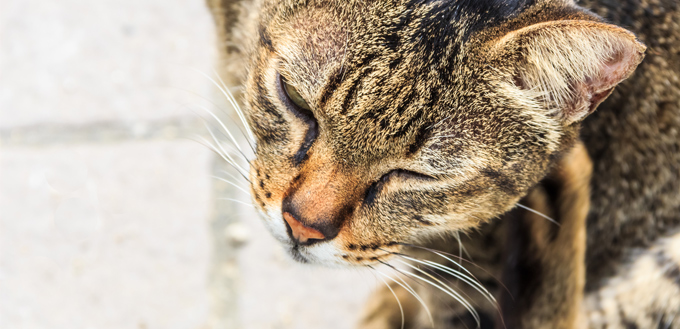
Bottom Line
Lice infestation, although it may not be very common, there are still chances that your cat may get infested with it. So, the best is if you could prevent the lice in your cat from taking over in the first place, rather than treating it.
However, remember not to use any over-the-counter products with your vet’s advice. Most of them are toxic to cats.
So, have you ever found lice in your cats? What did you do in the first place? Did we miss anything regarding lice treatment? Let us know in the comments below!
Related Post: Best Flea Comb for Cats
Sources:
- P. Gautier DVM, Efficacy Of Selamectin Against Biting Lice On Dogs And Cats, Wiley Online Library
- Lice in Cats, PetMD
Leave a reply
Note: The advice provided in this post is intended for informational purposes and does not constitute medical advice regarding pets. For an accurate diagnosis of your pet's condition, please make an appointment with your vet.



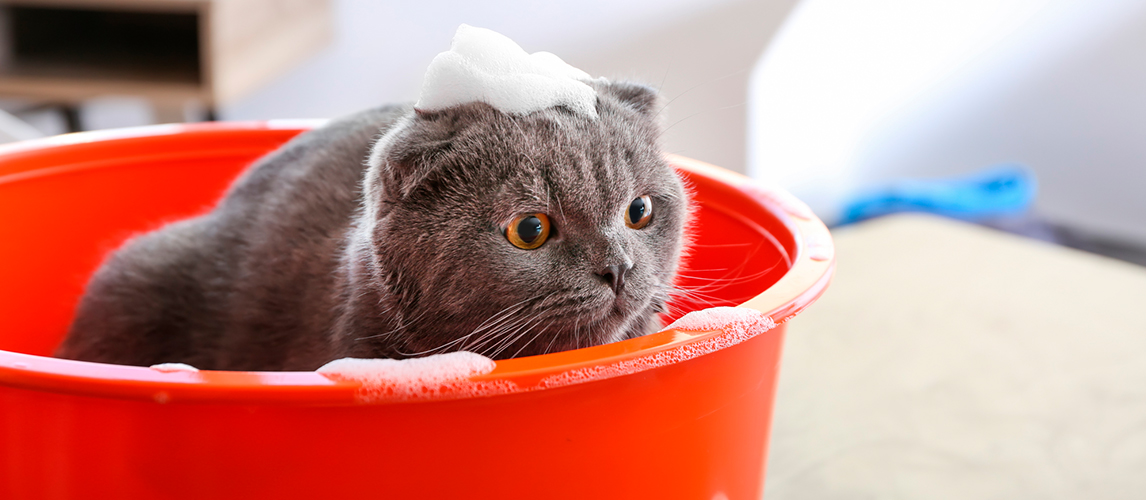


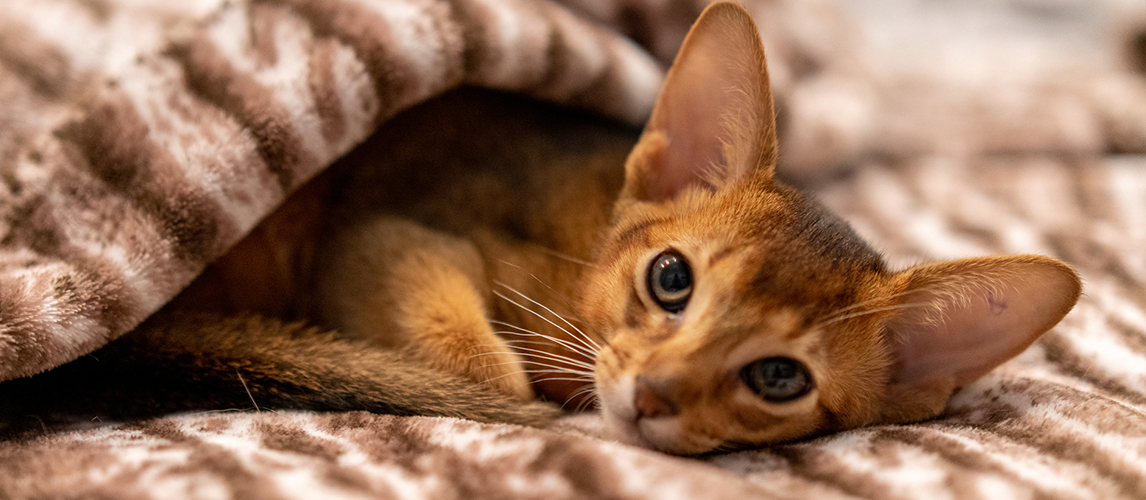
There doesn’t seem to be a way to treat a feral colony of 15 or more cats. Ferals will not be able to be sprayed or bathed, and putting a collar on one would be dangerous.
Does Diatomaceous Earth have any effect?